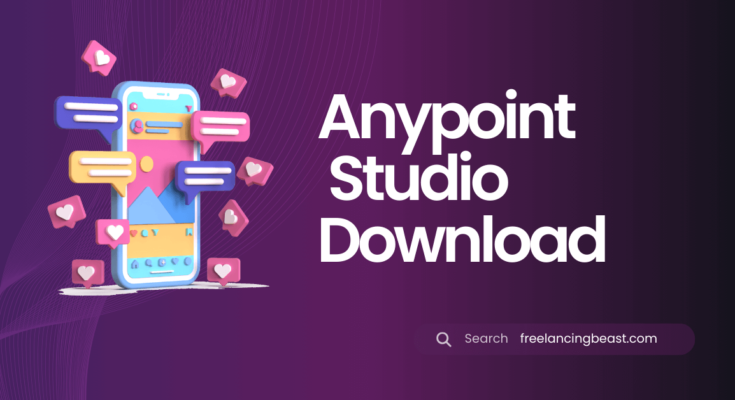Introduction
In the fast-paced world of software development, efficient integration and API management are crucial for business success. Anypoint Studio Download, a powerful IDE (Integrated Development Environment) provided by MuleSoft, has become a go-to tool for developers looking to streamline their integration projects. This guide delves into everything you need to know about downloading and using Anypoint Studio, offering insights and tips to help you maximize its potential.
What is Anypoint Studio?
Overview of Anypoint Studio
Anypoint Studio is an Eclipse-based development environment that allows developers to design, develop, and manage APIs and integrations. It is part of the broader Anypoint Platform, which provides comprehensive tools for API lifecycle management, including API design, development, testing, deployment, and monitoring.
Visit us for reading Surgent CPE Self Study.
Key Features
Anypoint Studio offers a range of features that make it a powerful tool for developers:
- Drag-and-Drop Interface: Simplifies the development process by allowing users to create integration flows without writing extensive code.
- Rich Component Library: Provides a wide array of pre-built connectors and components for various protocols and systems.
- DataWeave: A powerful data transformation language integrated within Anypoint Studio, enabling efficient data mapping and transformation.
- Debugging Tools: Includes robust debugging capabilities to test and troubleshoot integration flows.
- Integration with Anypoint Platform: Seamlessly connects with other components of the Anypoint Platform for comprehensive API management.
Why Choose Anypoint Studio?
Benefits for Developers
Anypoint Studio stands out for several reasons, making it a preferred choice for API and integration developers:
- Ease of Use: The intuitive drag-and-drop interface reduces the learning curve, enabling developers to quickly create and modify integration flows.
- Flexibility: Supports various integration patterns and protocols, making it versatile for different use cases.
- Productivity: The rich component library and DataWeave language enhance productivity by simplifying complex integration tasks.
- Community and Support: Access to a vibrant community and extensive documentation ensures that developers can find solutions and best practices easily.
Business Advantages
For businesses, using Anypoint Studio translates to several key advantages:
- Accelerated Development: Faster development cycles lead to quicker time-to-market for applications and services.
- Scalability: The ability to integrate with a wide range of systems ensures that solutions can scale with business growth.
- Cost Efficiency: Reduced development and maintenance time lowers overall project costs.
- Reliability: Robust debugging and testing tools ensure the delivery of reliable and high-quality integrations.
Downloading Anypoint Studio
System Requirements
Before downloading Anypoint Studio, it’s important to ensure that your system meets the necessary requirements:
- Operating System: Anypoint Studio is compatible with Windows, macOS, and Linux.
- Java Development Kit (JDK): Requires JDK 8 or later.
- RAM: Minimum 4 GB (8 GB or more recommended for better performance).
Step-by-Step Download Guide
Visit the MuleSoft Website
Navigate to the MuleSoft website and go to the Anypoint Studio section. You can find the download link under the “Resources” or “Products” menu.
Select Your Operating System
Choose the appropriate version of Anypoint Studio for your operating system (Windows, macOS, or Linux).
Download the Installer
Click the download link to start downloading the Anypoint Studio installer. The file size is typically around 1 GB, so ensure you have a stable internet connection.
Launch Anypoint Studio
After installation, launch Anypoint Studio from your applications folder (macOS) or start menu (Windows). The first time you launch the application, you may need to configure your workspace directory.
Setting Up Anypoint Studio
Initial Configuration
When you first open Anypoint Studio, you’ll be prompted to configure some initial settings:
- Workspace: Choose a directory where your projects and configurations will be stored.
- Java Runtime: Ensure that Anypoint Studio is pointing to the correct Java Runtime Environment (JRE). This can be configured in the preferences menu if needed.
Connecting to Anypoint Platform
To fully leverage the capabilities of Anypoint Studio, connect it to the Anypoint Platform:
- Login: In Anypoint Studio, go to “Anypoint Platform” in the top menu and select “Login.”
- Enter Credentials: Enter your Anypoint Platform credentials (username and password).
- Environment Selection: Choose the appropriate environment (e.g., Development, Production) you want to work in.
Installing Extensions and Plugins
Anypoint Studio supports various extensions and plugins to enhance its functionality:
- MuleSoft Exchange: Access a vast library of connectors and templates.
- Third-Party Plugins: Install additional plugins from the Eclipse Marketplace to extend the IDE’s capabilities.
Creating Your First Project
New Mule Project
To create a new Mule project in Anypoint Studio:
- Start a New Project: Click on “File” > “New” > “Mule Project.”
- Project Details: Enter the project name and choose the runtime version.
- Template Selection: Select a template if you want to use a predefined project structure, or start with a blank project.
Designing Flows
With your new project created, you can begin designing integration flows:
- Drag-and-Drop Components: Use the palette on the right to drag components onto the canvas.
- Configure Components: Double-click components to configure their properties and settings.
- Connect Components: Link components by drawing lines between them to define the flow of data.
DataWeave Transformations
DataWeave is MuleSoft’s powerful data transformation language:
- Add a Transform Message Component: Drag a “Transform Message” component to your flow.
- Write DataWeave Script: Use the DataWeave editor to write scripts for transforming data between different formats (e.g., JSON to XML).
Debugging and Testing
Anypoint Studio provides robust debugging tools:
- Set Breakpoints: Click on the left margin of the flow canvas to set breakpoints.
- Run in Debug Mode: Click the debug button to run your project in debug mode.
- Inspect Variables: Use the variables view to inspect and evaluate the state of your flow at breakpoints.
Deploying Your Project
Deployment Options
Anypoint Studio supports multiple deployment options:
- CloudHub: MuleSoft’s cloud-based integration platform.
- On-Premises: Deploy to on-premises Mule runtime engines.
- Hybrid: Use a combination of cloud and on-premises deployment.
Deploying to CloudHub
To deploy your project to CloudHub:
- Export Project: Click on “Export” > “Anypoint Studio Project to Mule Deployable Archive (Jar).”
- Login to Anypoint Platform: Log in to the Anypoint Platform via your web browser.
- Create New Application: In the Runtime Manager, create a new application and upload the deployable archive.
- Configure Settings: Configure the application settings, such as worker size and environment variables.
- Deploy: Click the “Deploy Application” button to start the deployment process.
Advanced Features and Tips
Using API Manager
API Manager is part of the Anypoint Platform and allows for advanced API management:
- Create API Specifications: Design APIs using RAML or OAS (OpenAPI Specification).
- Apply Policies: Enforce security and compliance by applying policies such as rate limiting and OAuth 2.0.
- Monitor and Analyze: Use analytics tools to monitor API usage and performance.
Custom Connectors
If existing connectors do not meet your needs, you can create custom connectors:
- Anypoint Connector DevKit: Use the Anypoint Connector DevKit to build custom connectors.
- Deploy Custom Connectors: Deploy your custom connectors to Anypoint Exchange for reuse in other projects.
Best Practices
- Version Control: Use version control systems like Git to manage your projects and collaborate with team members.
- Documentation: Maintain thorough documentation of your integration flows and API designs.
- Continuous Integration: Implement continuous integration (CI) pipelines to automate testing and deployment processes.
Conclusion
Anypoint Studio is a versatile and powerful tool that empowers developers to create, manage, and deploy APIs and integrations efficiently. By following the steps outlined in this guide, you can successfully download, set up, and begin using Anypoint Studio to streamline your development workflows. With its rich feature set and seamless integration with the Anypoint Platform, Anypoint Studio stands out as a crucial asset for any modern integration project.
Whether you are a seasoned developer or new to the field, Anypoint Studio provides the tools and resources needed to build robust and scalable integration solutions. Embrace the power of Anypoint Studio to enhance your development capabilities and drive business success in today’s interconnected world.



